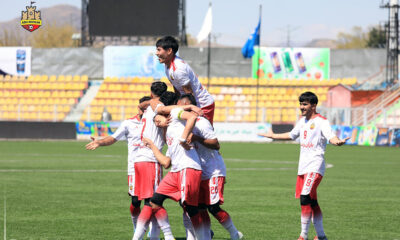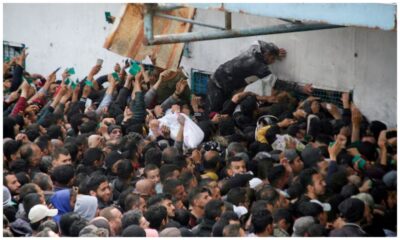World
N. Korea launches missiles from submarine as US-South Korean drills begin

Nuclear-armed North Korea test-fired two strategic cruise missiles from a submarine on Sunday, state news agency KCNA said on Monday, just as US-South Korea military drills were due to begin, Reuters reported.
“Strategic” is typically used to describe weapons that have a nuclear capability.
KCNA said the launch confirmed the reliability of the system and tested the underwater offensive operations of the submarine units that form part of North Korea’s nuclear deterrent.
South Korea’s Joint Chiefs of Staff (JCS) said the military was on high alert and the country’s intelligence agency was working with its US counterpart to analyse the specifics of the launch.
On Monday, South Korean and American troops were scheduled to begin 11 days of joint drills, dubbed “Freedom Shield 23,” which will be held on a scale not seen since 2017, read the report.
The drills will strengthen the allies’ combined defensive posture, the two militaries have said, and will feature field exercises including amphibious landings.
North Korea has long bristled over drills it regards as a rehearsal for invasion. It has conducted a record number of missile tests and drills in the past year in what it says is an effort to boost its nuclear deterrent and make more weapons fully operational.
“It’s very regretful that North Korea is using our regular, defensive drills as a pretext for provocation,” said Koo Byoung-sam, spokesperson for South Korea’s unification ministry handling relations with the North. “I hope North Korea realises that there is nothing they can earn from escalating tensions on the Korean peninsula.”
The submarine launches aimed to show North Korea’s determination to control a situation in which, KCNA said, “the US imperialists and the south Korean puppet forces are getting evermore undisguised in their anti-DPRK military manoeuvres.”
DPRK stands for North Korea, officially the Democratic People’s Republic of Korea.
KCNA said the strategic cruise missiles were fired from the “8.24 Yongung” submarine in the water off the east coast of Korea in the early hours of Sunday, Reuters reported.
The missiles travelled some 1,500 kilometres (932 miles) before hitting a target in the sea, the KCNA report said.
A JCS spokesperson said not everything North Korea claimed was accurate, but he did not give further details.
Japan’s Chief Cabinet Secretary Hirokazu Matsuno said there was no information that the missile flew toward Japan’s waters or caused any damage.
“If North Korea’s announcement that the missile had a range of more than 1,500 kilometres was true, it would pose threats to the region’s peace and stability – we are concerned,” Matsuno said.
He said US military deterrence in Asia-Pacific is “essential” in the region, adding the North “may step onto further provocative acts such as a nuclear test.”
Leif-Eric Easley, a professor at Ewha University in Seoul, said North Korea could be exaggerating its capability to arm such missiles with nuclear warheads, read the report.
“The Kim regime wants to show it can match or surpass military capabilities on display during US-South Korea defence exercises. Yet the reality is North Korean soldiers are poorly fed and are being ordered to help farmers address the country’s food shortage,” Easley said.
North Korea has a large submarine fleet but the 8.24 Yongung (August 24th Hero) is its only known experimental ballistic missile submarine. Analysts say it plays a critical role in the development of missiles, submarine technology and operational procedures, as well as hands-on training of new submariners.
North Korea has said it is building an operational ballistic missile submarine, Reuters reported.
While overseeing a short-range ballistic missile (SRBM) launching exercise on Thursday, North Korean leader Kim Jong Un ordered the military to intensify drills to deter and respond to a “real war” if necessary.
On Sunday state media reported that Kim led a ruling party meeting to discuss and decide on “important, practical measures” to boost the country’s war deterrence in the midst of stepped-up actions by the United States and South Korea. The report did not provide specifics on the measures.
World
Famine risk ‘very high’ in Gaza, especially in north, US official says

Israel has taken significant steps in recent weeks on allowing aid into Gaza, the U.S. special envoy for humanitarian issues said on Tuesday, but considerable work remained to be done as the risk of famine in the enclave is very high.
David Satterfield declined to say whether Washington was satisfied by Israel’s moves, weeks after U.S. President Joe Biden demanded action to alleviate the humanitarian crisis in Gaza, saying conditions could be placed on U.S. support for close ally Israel if it did not implement a series of “specific, concrete and measurable” steps.
“Israel has taken significant steps in these last two and a half weeks,” Satterfield told reporters.
“There is still considerable work to be done. But progress has been made.”
The risk of famine throughout war-devastated Gaza, especially in the north, is “very high”, he said, calling for more to be done to get aid to those in need in that part of the tiny, densely populated Palestinian territory, Reuters reported.
The United Nations has long complained of obstacles to getting aid in and distributing it throughout Gaza in the six months since Israel began an aerial and ground offensive against Gaza’s ruling Islamist militant group Hamas.
Israel’s military campaign has reduced much of the territory of 2.3 million people to a wasteland with an unfolding humanitarian disaster since October, when Hamas ignited war by storming into southern Israel.
The head of the U.N. Palestinian refugee agency (UNRWA), Philippe Lazzarini, said on Tuesday that the daily average number of trucks entering Gaza during April was 200 and that there had been a peak on Monday of 316.
There was also now a focus on garbage collection, he added, especially in southern Gaza, in a bid to avoid disease outbreaks as the warmer weather approaches.
World
North Korea officials visit Iran in a rare public trip
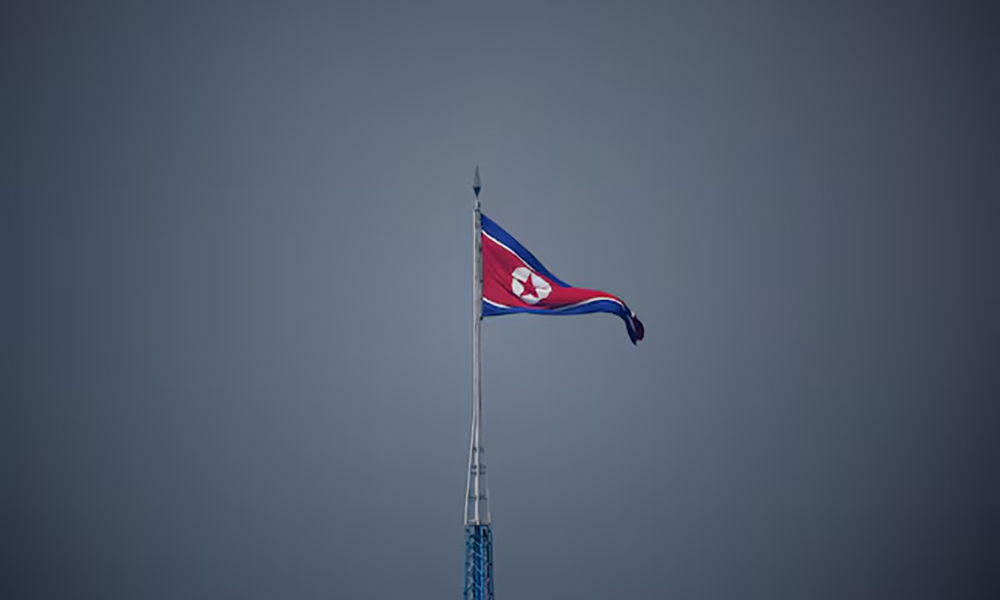
A North Korean delegation led by the cabinet minister for international trade is visiting Iran, the North’s official media said on Wednesday in a rare public report of an exchange between the two countries believed to have secret military ties, Reuters reported.
The minister for external economic relations, Yun Jong Ho, left Pyongyang on Tuesday by air leading a ministry delegation to visit Iran, the North’s KCNA news agency said. It gave no other detail.
North Korea and Iran have long been suspected of cooperating on ballistic missile programmes, possibly exchanging technical expertise and components that went into their manufacture, read the report.
Iran has provided a large number of ballistic missiles to Russia for use in its war with Ukraine, Reuters reported in February.
North Korea is also suspected of supplying Russia with missiles and artillery, although both countries have denied the allegation.
Yun has previously worked on the country’s ties with Syria, according to South Korean government database.
Yun has been active in the country’s increasing exchanges with Russia, earlier this month leading a delegation to visit Moscow, according to KCNA.
World
Malaysian navy helicopters collide in mid-air, 10 killed
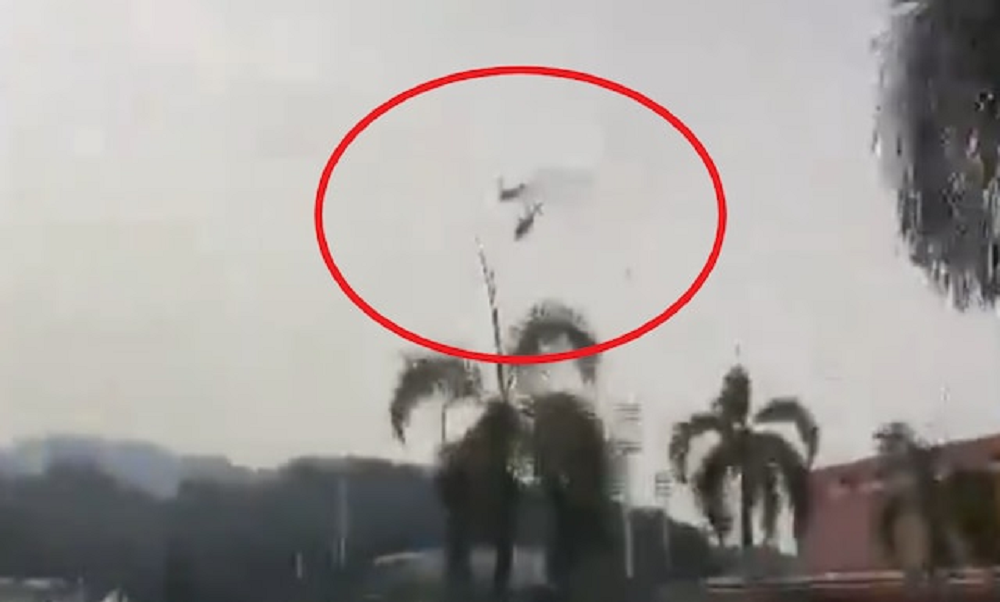
Two Malaysian navy helicopters collided in mid-air during a rehearsal for a naval parade on Tuesday, killing all 10 crew members aboard, the navy said in a statement.
The incident occurred at the Lumut naval base in the western state of Perak at 9.32 a.m. on Tuesday morning, the navy said.
“All victims were confirmed dead at the scene and sent to the Lumut naval base military hospital for identification,” Reuters reported the navy as saying.
A video circulating on local media showed several helicopters flying in formation, when one of the choppers’ rotor clipped another before both aircraft crashed into the ground.
Local police confirmed the footage was genuine.
The navy said it would carry out an investigation into the cause of the accident, Reuters reported.
Defence Minister Mohamed Khaled Nordin said the aircraft – a maritime operations helicopter and a Fennec military chopper – were rehearsing for a parade celebrating the 90th anniversary of the Royal Malaysian Navy, due to be held on Saturday.
Efforts were underway to verify the identities of the crew members killed, all of whom were below the age of 40, Mohamed Khaled told reporters.
-

 Sport5 days ago
Sport5 days agoRashid Khan threatens BBL pullout after Australia postpones Afghanistan T20I series
-

 Sport4 days ago
Sport4 days agoAfghanistan Champions League kicks off with grand opening ceremony
-
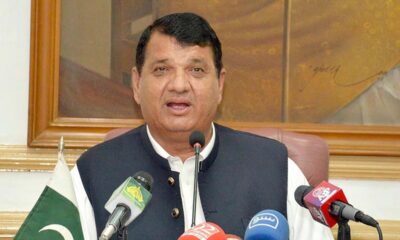
 Latest News3 days ago
Latest News3 days agoPakistan’s frontiers minister stresses ‘dignified’ return of Afghan refugees
-
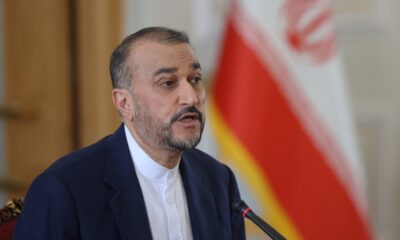
 Regional4 days ago
Regional4 days agoIran’s foreign minister downplays drone attack, says Tehran investigating
-

 Latest News5 days ago
Latest News5 days agoTen people killed by floods in Helmand
-

 Business4 days ago
Business4 days agoAfghanistan’s economic prospects are bleak: World Bank
-

 Latest News4 days ago
Latest News4 days agoMore than 800 Afghan refugees deported from Pakistan in two days
-
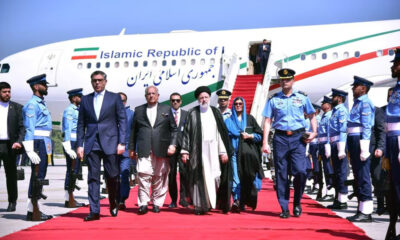
 Regional2 days ago
Regional2 days agoIranian president lands in Pakistan for three-day visit to mend ties






